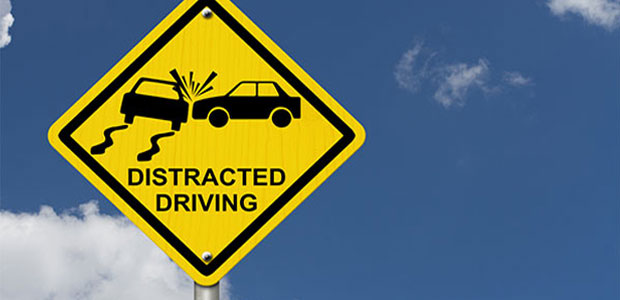
Where the Rubber Meets the Road
Distracted driving is risky business for employers.
- By Curtis Moore
- Oct 07, 2019
Distracted driving is dangerous, so it should come as no surprise to employers that distracted driving has been an area of emphasis for the Occupational Safety and Health Administration (OSHA) in recent years. Indeed, motor-vehicle collisions now account for more worker fatalities than any other cause – including machine guarding and lock-out tag-out violations. As a result, OSHA has taken the position that distracted driving is a recognized hazard under the OSH Act’s General Duty Clause. Penalties for willful violations of the General Duty Clause can range up to $132,598 per occurrence.
The National Highway Traffic Safety Administration (NHTSA) defines distracted driving as anything that diverts the driver’s attention away from the primary focus of operating the motor vehicle. Distracted driving is the cause of approximately one-quarter of all motor-vehicle crashes. Not surprisingly, texting and talking on hand-held and hands-free mobile devices while driving are common sources of distraction. Alarmingly, one study from researchers at the University of Utah concluded motorists distracted by a cellular device were as impaired as drunk drivers.
Employers Need Effective Distracted-Driving Policies
To prevent workplace injuries and deaths and to minimize potential legal liability, employers must draft effective distracted-driving policies. These policies will necessarily need to address the use of technology and mobile devices while driving. At a minimum, effective distracted-driving policies should set forth the following:
- A prohibition against driving under the influence of alcohol or drugs;
- Mandatory use of seatbelts by drivers and passengers;
- A prohibition on eating and drinking while driving;
- A prohibition on emailing, texting and using social media while driving; and
- A prohibition on the use of hand-held devices while driving
It should be noted that the National Safety Council considers hands-free devices to be just as distracting as hand-held devices while driving. As such, employers may wish to consider whether to allow their employees to use hands-free devices or modes of communication while driving. Some employers have adopted the policy that no phone calls or text messages should occur while a vehicle is in motion. Instead, all calls should be taken or returned when the vehicle is parked in a safe location.
Enforcing Distracted-Driving Policies is Also Critical
Written policies mean nothing if they are not effectively implemented and consistently enforced. Employers should train all employees on their distracted-driving policies, as well as the consequences for an employee’s failure to follow the policies. Employers should have employees sign a written form that acknowledges the employee received the distracted-driving policy and was trained on the employer’s expectations regarding the policy. Periodic refresher trainings are helpful in ensuring compliance. Employers should re-train on the policy any time they become aware of employee non-compliance.
Employees should be disciplined for failing to follow the distracted-driving policy. Discovering non-compliance or violations may be difficult because employees often drive alone and away from the employer’s principal place of business. Some employers combat this problem by implementing controls that lock mobile devices from receiving or making calls or sending texts while the vehicle is in motion. Other employers have implemented GPS-tracking devices and in-vehicle cameras to encourage employee compliance with distracted-driving policies.
Regardless of the methods used to discover violations, employers must consistently audit the workplace for violations of the policy and must consistently mete out discipline for policy infractions. Failure to do so may place employees at risk for a motor-vehicle accident and the employer at risk for OSHA citations.
Conclusion
In today’s technological age, employers must be diligent in drafting, reviewing, and enforcing their distracted-driving and mobile-device policies to prevent workplace accidents and injuries. A failure to do so may result in OSHA citations and significant costs. Indeed, OSHA estimates that motor-vehicle collisions cost employers $60 billion annually in medical care, legal expenses, property loss, and lost productivity. Employers with effective distracted-driving policies may mitigate the risk of litigation and OSHA citations while also ensuring a safe and effective workplace for their employees.